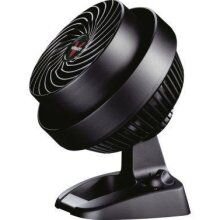This heating season marks my 12th anniversary with this little heater. Each year I learn a little more about the many facets of wood heat. Some things that seem to be working well this year are:
**Chainsawing - When I get down to the end of the log, I cut the last piece to full length, even if it means a really short piece is left. I don't cut the last length equally in half anymore. That may not seem like a big deal in print. But when you're working with 36" and 40"+ diameter trees all year, those right-sized end cuts add up to a lot of perfectly sized splits. I know almost exactly how long I need to cut a log to fit in this stove. I cut all to the ideal length, whenever feasible (read the chop-saw hint, below) without any regard to the little piece left over. Whether you consider stacking or burning, you're better off having more equal length, proper sized splits. There's gonna be a ton of odd size little pieces anyway when you collect your own wood.
**Load long splits toward the front of the Intrepid, spanning both doors. They keep short ones and knotty pieces from burning in direct contact with the glass. And it also means less of a mess when you open the doors. I've had a front glass crack from excessive heat, long ago when I was a nubie with this stove, and now I know why they tell you not to let your wood burn directly against the glass. But if it is, don't panic. It wasn't a burning log that cracked the glass. It was a heaped up pile of red hot coals, spilling over the ash fettles. I stoking the thing in the middle of a big snow storm, and opening it up to clear the ashes was a scary option. It wasn't even possible for me to carry the ash pan out at that temperature. I could have shoveled... I was a nubie. At that time, I didn't know the virtue of fire-rated gloves. (Strangely, I just Googled the topic and the ones I have, "Shelby Firewall", did not come up, even 2 and 3 pages back. They are monstrously protective and I recommend them highly. I had to put the actual name in the search field to get them. Mine are closest to current Shelby product code #5226)
When my coal bed is low, if I've let the fire burn down quite a bit, after I sift the ashes from under the coals with the slicer-poker (!! and clear the fettles !!) and empty the ash pan if need be, I can put any size piece on the bottom. The ash fettles will keep them from burning up against the glass. Since I always seem to have an over abundance of less than ideal length pieces, I save the long ones. So I'll put two shorter ones on the bottom for my first layer, if the coals are low enough. But load your long splits along the doors and odd sizes to the back. Eventually I close the doors and top load because you can only load this stove about halfway if you don't. It's often a two handed job, one hand using the slicer poker to hold a split back while pushing another past it. And don't play games like "I bet I can squeeze this last one in!" until you have years of experience under your belt. When they're involved (burning) it's scary to realize you have to take one out cause the griddle won't close.
**Chopsaw hint
Bucking up big timber is a tiresome job in 100* heat. (Bucking = the tree is down and you are cutting the trunk into manageable size pieces.) The tiny Intrepid only fits a 16" or 18" split. If I have a monster tree I have to remove, no way can I afford the time it takes to cut it up that small, unless it's so big I can't move it any other way. So often I end up cutting, and later splitting, longer pieces than will fit in my stove. When it came time to burn, I used to rev up my little chainsaw that I keep in the back and cut them to size in my staging area. But I can't do that late at night, because I'm a good neighbor };-] And it's loud and smokey for me too. In a screened in porch, I start to taste that 50:1 mix in my throat. But my little Hitachi chopsaw is amazing. I can step out any time of night and slice down lengthy splits. Yeah, it's dusty, but I wear an N95 and safety glasses. And earplugs. Knowing I have this quick, convenient option right before burning gives me less pause when I buck, split and stack too-long wood.
**Keep the ash lip clean. No question about it, the gray soot on the mantle (and everywhere else) tells the story. This year I have been fastidious about using a dust pan to put the ash back into the stove, and then a small handheld vacuum to clean what's left off the outside. There is a BIG difference in how much soot is in the air. Here it is December 19, and by now I would have vacuumed the mantle three times. But I only did it once so far. Convection carries the really fine ash into the air, my friends. Keep your stove CLEAN on the outside.
**Leave the doors open longer - it's a time saver in the long run.
If your stove gives you this option, you can let that fire die down down down and truly realize the amazing benefit of the heat-life of cast iron. Even if my coals are a dull red, the fire will start up nicely after awhile. And another huge benefit is less creosote. The quick and intense heat from opening it up gets the stack back up to temp quickly. Normally I have to clean the chimney on a Holiday calendar - Thanksgiving, Christmas, Valentines Day, and maybe Easter. This year, even though I've been burning since the first cool nights, I didn't do a cleaning until right before Christmas. This is because a) I wait until my 2nd load of wood before I close it up from a cold start. b)My wood is definitely more seasoned. c) I am waiting longer before I close my secondary combustion damper.
And all my wood is never the same insofar as moisture content. It varies considerably because of different trees, seasoning times, etc. I try to remember which wood is which... please. Now that I'm in the habit of waiting before I close up the stove, a wet load of wood is less likely to catch me unawares.
**Chainsawing - When I get down to the end of the log, I cut the last piece to full length, even if it means a really short piece is left. I don't cut the last length equally in half anymore. That may not seem like a big deal in print. But when you're working with 36" and 40"+ diameter trees all year, those right-sized end cuts add up to a lot of perfectly sized splits. I know almost exactly how long I need to cut a log to fit in this stove. I cut all to the ideal length, whenever feasible (read the chop-saw hint, below) without any regard to the little piece left over. Whether you consider stacking or burning, you're better off having more equal length, proper sized splits. There's gonna be a ton of odd size little pieces anyway when you collect your own wood.
**Load long splits toward the front of the Intrepid, spanning both doors. They keep short ones and knotty pieces from burning in direct contact with the glass. And it also means less of a mess when you open the doors. I've had a front glass crack from excessive heat, long ago when I was a nubie with this stove, and now I know why they tell you not to let your wood burn directly against the glass. But if it is, don't panic. It wasn't a burning log that cracked the glass. It was a heaped up pile of red hot coals, spilling over the ash fettles. I stoking the thing in the middle of a big snow storm, and opening it up to clear the ashes was a scary option. It wasn't even possible for me to carry the ash pan out at that temperature. I could have shoveled... I was a nubie. At that time, I didn't know the virtue of fire-rated gloves. (Strangely, I just Googled the topic and the ones I have, "Shelby Firewall", did not come up, even 2 and 3 pages back. They are monstrously protective and I recommend them highly. I had to put the actual name in the search field to get them. Mine are closest to current Shelby product code #5226)
When my coal bed is low, if I've let the fire burn down quite a bit, after I sift the ashes from under the coals with the slicer-poker (!! and clear the fettles !!) and empty the ash pan if need be, I can put any size piece on the bottom. The ash fettles will keep them from burning up against the glass. Since I always seem to have an over abundance of less than ideal length pieces, I save the long ones. So I'll put two shorter ones on the bottom for my first layer, if the coals are low enough. But load your long splits along the doors and odd sizes to the back. Eventually I close the doors and top load because you can only load this stove about halfway if you don't. It's often a two handed job, one hand using the slicer poker to hold a split back while pushing another past it. And don't play games like "I bet I can squeeze this last one in!" until you have years of experience under your belt. When they're involved (burning) it's scary to realize you have to take one out cause the griddle won't close.
**Chopsaw hint
Bucking up big timber is a tiresome job in 100* heat. (Bucking = the tree is down and you are cutting the trunk into manageable size pieces.) The tiny Intrepid only fits a 16" or 18" split. If I have a monster tree I have to remove, no way can I afford the time it takes to cut it up that small, unless it's so big I can't move it any other way. So often I end up cutting, and later splitting, longer pieces than will fit in my stove. When it came time to burn, I used to rev up my little chainsaw that I keep in the back and cut them to size in my staging area. But I can't do that late at night, because I'm a good neighbor };-] And it's loud and smokey for me too. In a screened in porch, I start to taste that 50:1 mix in my throat. But my little Hitachi chopsaw is amazing. I can step out any time of night and slice down lengthy splits. Yeah, it's dusty, but I wear an N95 and safety glasses. And earplugs. Knowing I have this quick, convenient option right before burning gives me less pause when I buck, split and stack too-long wood.
**Keep the ash lip clean. No question about it, the gray soot on the mantle (and everywhere else) tells the story. This year I have been fastidious about using a dust pan to put the ash back into the stove, and then a small handheld vacuum to clean what's left off the outside. There is a BIG difference in how much soot is in the air. Here it is December 19, and by now I would have vacuumed the mantle three times. But I only did it once so far. Convection carries the really fine ash into the air, my friends. Keep your stove CLEAN on the outside.
**Leave the doors open longer - it's a time saver in the long run.
If your stove gives you this option, you can let that fire die down down down and truly realize the amazing benefit of the heat-life of cast iron. Even if my coals are a dull red, the fire will start up nicely after awhile. And another huge benefit is less creosote. The quick and intense heat from opening it up gets the stack back up to temp quickly. Normally I have to clean the chimney on a Holiday calendar - Thanksgiving, Christmas, Valentines Day, and maybe Easter. This year, even though I've been burning since the first cool nights, I didn't do a cleaning until right before Christmas. This is because a) I wait until my 2nd load of wood before I close it up from a cold start. b)My wood is definitely more seasoned. c) I am waiting longer before I close my secondary combustion damper.
And all my wood is never the same insofar as moisture content. It varies considerably because of different trees, seasoning times, etc. I try to remember which wood is which... please. Now that I'm in the habit of waiting before I close up the stove, a wet load of wood is less likely to catch me unawares.


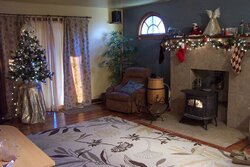
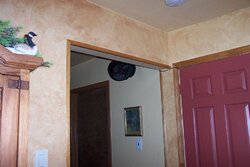
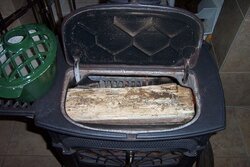
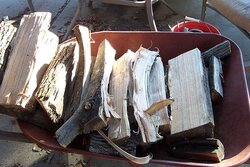
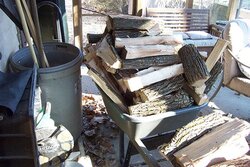
 I actually used to put the shop fan in back of the stove, in the hearth, and move air that way. But nothing needs to be done in the den. It's that spot on the wall that makes the difference to the rest of the 1st floor. I wish I had a straight shot above to the 2nd floor so I could put a passive register in, but I don't.
I actually used to put the shop fan in back of the stove, in the hearth, and move air that way. But nothing needs to be done in the den. It's that spot on the wall that makes the difference to the rest of the 1st floor. I wish I had a straight shot above to the 2nd floor so I could put a passive register in, but I don't.